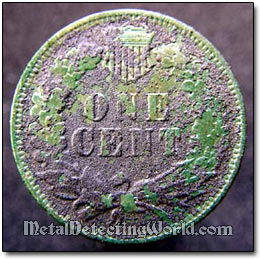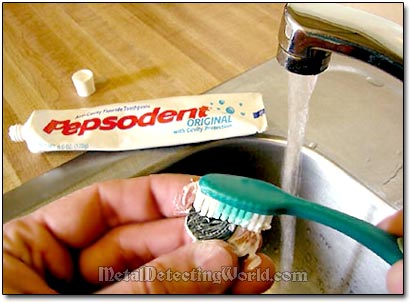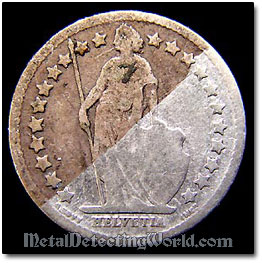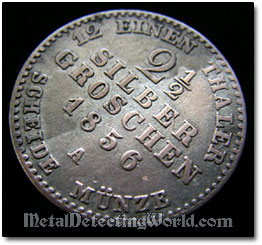Cleaning and Preservation of Coins - A Complete Guide, page 7
MECHANICAL CLEANING of COINS by Brushing
(...CONTINUED from previous page)
3) How To Clean Coins with Brushes
CAUTION: Even brushing coins with a soft toothbrush can leave microscopic scratch traces on the coin if loose dirt particles are present on the coin!
Below is a picture of a freshly dug bronze coin, Indian Head Penny, that is covered with hard dirt - a usual case, to be removed by brushing.

Before cleaning coins with a brush, the coins must be soaked in warm soapy water for a while and then rinsed. It is practical to start carefully brushing the coin with a soft toothbrush under the running water first. Then you can brush the coin with Pepsodent toothpaste for better results if necessary.

I always use Pepsodent Original as it has been proven the most effective toothpaste for brushing coins, especially silver ones. Here is an example of a silver coin being cleaned by brushing with Pepsodent toothpaste. I covered the coin's half with a scotch tape, and left another half for brushing, thus you could see the difference the toothpaste can make. Of course, the attractive tarnish of the silver coin was gone.

That is why you should not get carried away with brushing any old silver coin. As much of silver tarnish as possible should be left on the coin.
A Half of This Silver Coin Was Brushed Slightly

Now let us get back to brushing a bronze Indian Head penny. If the dirt is still remaining on the coin, place the coin into olive oil for a day or two and then brush it again. Eventually the dirt is removed off the coin's surface which retains its original patina.

For removing heavy dirt crust or surface coatings irremovable in other ways, you can obtain industrial brushes of soft and hard varieties at the hardware store.
The 000 steel wool can be used for silver of poorer quality of preservation as well as for iron and zinc coins.